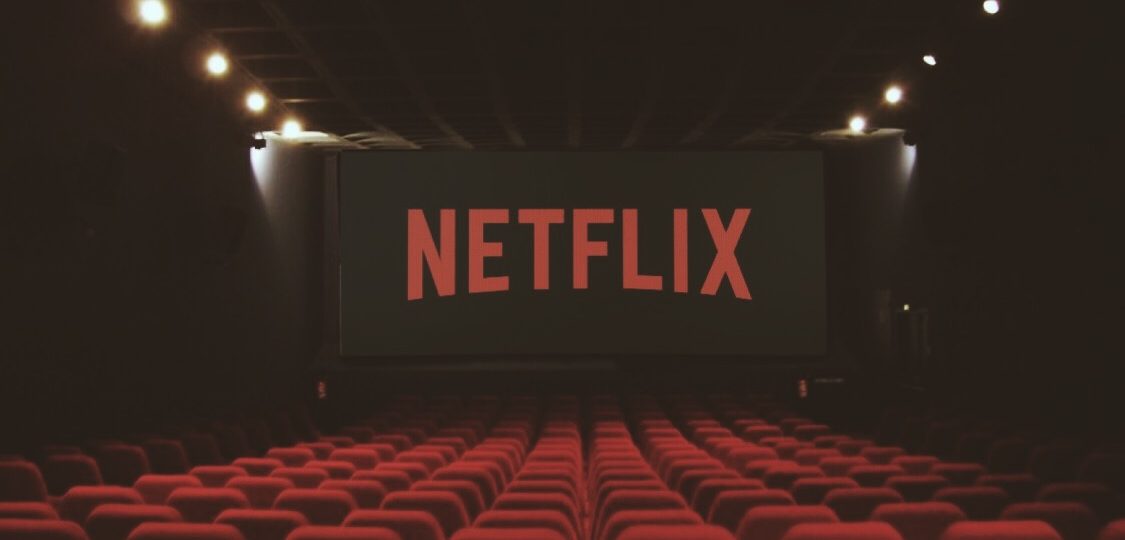Films nowadays are garish, gory, or gross.
At least, that’s what many who fear the “era of streaming” believe. Fewer people go to the cinema, and when they do, it’s to see sequels or remakes. If it’s an original film, it’s most likely a conventional three-part-structure narrative consisting of a condensed and superficial plot that serves as an easy cash-grab for Hollywood executives, and as escapism to an audience unwilling to grapple with art they appreciate. The myriad of streaming platforms rising to popularity only add to this problem; not only are they inundated with television series and superficial films tailored to the small screen, but increasingly often, they are the creators of the aforementioned conventional money-maker movie itself.
But, is the future of cinema as bleak as it’s greatest critics believe? Is the era of streaming suffocating the artistry of film and separating contemporary film-making from its own former renaissance? Has the rise in popularity of television series destroyed the world’s tenderness for film?
While many may believe that streaming platforms, the general increased focus on television series over films, or the small-screen emphasis as a whole is the serial killer of cinema, in actuality, it is it’s very saviour.
WE NEED AN AUDIENCE, DON’T WE?
While it is true that fewer people make the trek out to the movie theatres than perhaps used to (with domestic movie theatre attendance hitting a 25-year low in 2017) streaming platforms and the culture of at-home-viewing have allowed for more viewership of films than would exist otherwise. Between getting to and from the theatre, buying the ticket, and perhaps indulging in a drink or snack, going to the movies isn’t necessarily classified as a wallet-friendly activity. Particularly when honing in on younger generations with less monetary security than those older than them, the ability to view films on streaming platforms opens up a wider scope of individuals to appreciate cinema. The more usage online, the more of an audience there is as a whole. With an increased audience size, film has the potential to find widespread support, or locate niches of supporters, as opposed to being able to appeal only to a select amount of people who can/will physically go to the movie theatres.
THE ART OF CINEMA
In its many eras, cinema has been an art form to its core. Film is the avenue in which a multitude of artistic highways converge. In art forms specific to videography, there is an artfulness to editing, in the performance of actors and actresses, in choosing specific camera angles and creating the composition of frames. However, it is also a place in which fashion, music, colour, light, and literary stylings meet and interact with (arguably) congruent influence on the quality of film produced.
Specifically, streaming platforms and their revolution of television series has allowed for all of these artistic elements to flourish fully and unfold beautifully in the context of their long-term narratives.
The new efforts often put into the artfulness of creating television has aligned itself with the heart of some traditional cinematic values – something not many contemporary popular films can say.
For instance, often cited as the best television series of all time, Breaking Bad was integral in the reshaping of and departure from the confines a TV show previously operated within. As opposed to the prior soap or sitcom, Breaking Bad’s gorgeous focus on cinematography, misé-en-scene and various other cinematic elements heightened the playing field for the quality expected of a television series. Breaking Bad’s attention to colour in costume as aligning its characters on a moral scale and signalling their involvement with their protagonist’s drug empire highlighted not only the very artistic knowledge its conceptual creators had, but their willingness to devote effort to detail on something potentially unnoticeable. Their dedication to creating a coherent visual motif that cooperated with the shows narrative and characters deepened its overall cinematic experience.
Similar appraisals can be said of the Duffer Brother’s Netflix Original series Stranger Things. Set in the 1980s, the intricacy that has been considered in the cultivating of the show has added to its image and strength in an era. The Season 1 budget of 6 million USD per episode undoubtedly helped in this realm, allowing for the creators of and contributors to the show pay particular attention to the complexities of creating a realistic 1980’s. Their attention to the props, costumes, set-pieces, as well as stylings of makeup and hair, all echo the timeless cinematic element of ‘misé-en-scene’; the Duffer Brothers have allowed for the contents of their frames to tell a grander story that ripples beneath the exact words and actions of their characters- one that unfolds in the context of their existence within history.
Visual features (such as colour and props/costume) allowing for movies to artfully tell holistic stories has been a prominent feature of film since it’s conception. The same can be said for narrative strategies as well. How exactly does one tell this story? Historically, filmmakers have toyed with this question. Some films play with the idea of an omniscient narrator, a biased narrator, or one of their characters telling the story themselves. The possibilities are varied and open for individual interpretation. There is no difference when it comes to the movies and television series of today. An example of a series that plays with this concept is Netflix’s original take on a political drama: House of Cards.
House of Cards craftily employs extremely specific, small-interjections of narration, only done by the two main protagonists of the show. Moreover, these narrative instances broke the third-wall by addressing the concept of an ‘audience’ and brought them into the physical world of the show, thereby thinning the distance between the realities of the ‘show’ and ‘not-show’ planes of existence.
THE FUTURE WE ARE FORGING
While new films, television series, and streaming platforms play into many common features of traditional cinema, they are also shifting the definition of what cinema is, and what films should be about. This is something that allows for cinema to keep up with the changing world, and keep a place of prominence in the consumption of media.
Films and series, as they move toward the future, have increased focus on new voices and narratives being played out over long periods of time. Shows such as GLOW, Orange is the New Black, and Killing Eve are all examples of series focused on the stories of and strengthened by the characters of women from extremely diverse standings. These shows are a far cry from the previous male-centric movies, in which the existence of a woman in the cinematic space normally served an aesthetic or plot-point purpose.
Just as exciting, the television series Crazy Ex Girlfriend has blended classical elements of the ‘musical’ (a well recognized and long-lived genre) with a contemporary discussion of mental health and the perpetuation of unhealthy interpersonal relationships.
Shows like Westworld and Black Mirror have allowed for the exploration of technological advancements in society having moral implications, and questioning what the boundary of personhood truly is.
And it’s not just the myriad of new television series that are pushing filmmaking into a new era. Contemporary films that aren’t the new and common cash-grab are pushing cinema to new boundaries, and by doing so, keeping in touch with one of the purposes of film itself.
The 2018 Stan Lee film BlacKkKlansman explores race relations in the United States of America throughout time, in a gorgeously shot and carefully crafted form. Lee Chang-dong’s 2018 film Burning immerses itself in the effects of jealousy, the constraints of class, and unanswerable questions by plunging its narrative into the youth of South Korea. Alex Garland’s Annihilation serves as an immensely impressive revival of science-fiction and thriller genres, surrounding a diverse female cast of characters navigating not only the fantasy landscape of their world but the emotions of grief and self-destruction as well. Ready Player One is a Steven Spielberg film that examines the future of technology, the boundaries of reality that technology can stretch, and blends together animation and real-life cinematography to create awe-inducing visuals (despite the questionable quality of the film otherwise).
BIRD BOX AND BANDERSNATCH: THE CONCRETE EMBODIMENT OF CINEMAS SURVIVAL
Two specific examples of new creations that contain both classic features of cinema while simultaneously broadening its horizon are the two new Netflix Original films Bird Box and Black Mirror’s Bandersnatch.
Bird Box is not only narratively strong, but it is edited in an engaging fashion. The way in which the film plays with suspense is a call to its place within the thriller/horror genre, and its focus on the element of sight almost characterises the sense. This knowledge of suspense and the ways in which to wield it upon an audience dates back to even the earliest years of cinema, making Bird Box one of the newest instalments in a long line of the thriller’s cinematic lineage. However, the film is filled with diverse and fully-fleshed out characters. By centring itself around a female character and her trouble inhibiting the traditional role of motherhood whilst navigating an almost post-apocalyptic world, the film departs from its genres prior victimisation of beautiful, effeminate, and primarily western women for the purpose of its own fear-inducing tactics. Similarly, the main supporting character (played brilliantly by Trevante Rhodes) breaks the compartmentalised and damaging common cinematic stereotypes of African American men. Rhodes’ character is gentle, kind, and often-times more ‘maternal’ than his female counterpart. Such characterisations mark a pleasant and necessary departure from the previous pigeonholed places for people of colour in film. Bird Box also marks Sandra Bullock’s entry into the streaming world. Bullock plays the role of the film’s protagonist, and being solely a large screen actor prior to Bird Box, her participation in the film legitimises not only Netflix Original films, but streaming platforms place in film production as well.
As the latest instalment in the cinematic universe that is Black Mirror, Bandersnatch has potentially revolutionised the format of films. Set up as a ‘choose-your-own-adventure’ film, Bandersnatch has not only given unprecedented control to its viewers but has crafted an almost limitless amount of narrative avenues, therefore. Its probe into the human psyche and the waters of paranoia and obsession that lie within it herald the film as a psychological thriller like no other. Moreover, the film’s recognition of the audience’s presence, the presence of Netflix as a streaming platform, and the notion of control over its protagonist prompt philosophical questions surrounding what free-will, and highlight the true marvel that is the dedication put into this ‘choose-your-own-adventure’ format.
FILMMAKING OVER FILM
So what about going to the cinema? What about the importance of film, as opposed to the obsession with television? Does the “big-screen” define or validate the experience of a movie? Can TV be “cinematic?”
I propose that we cease from approaching the art that is filmmaking from such restricted categories.
As opposed to film vs television, the movie theatre vs the at-home experience, or any other culturally created dichotomy made with the purpose to devalue or cheapen one form over another, we should grow to appreciate the action of ‘filmmaking’ away from
What is film, after all, if not artistically daring, consistently changing, and culturally challenging?




